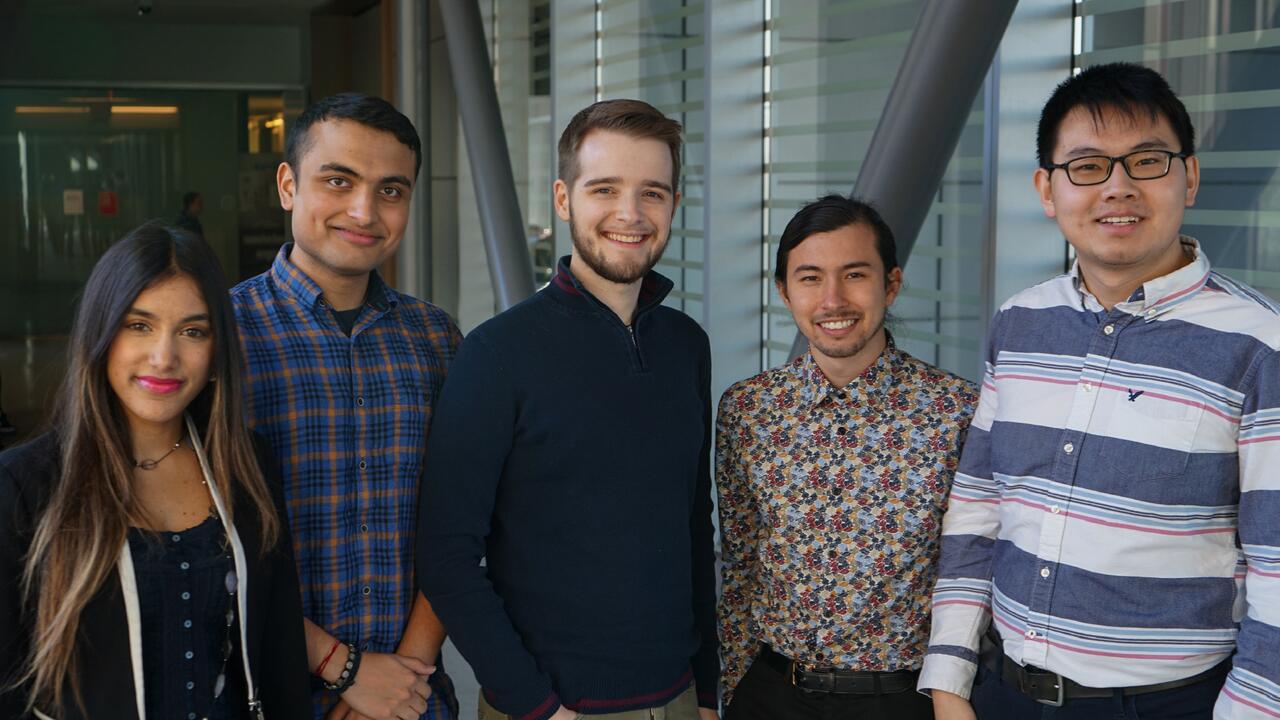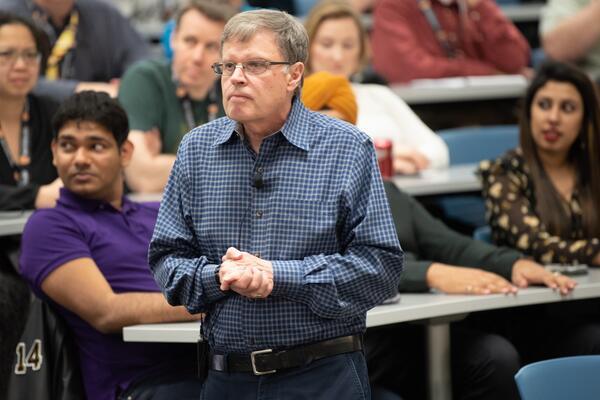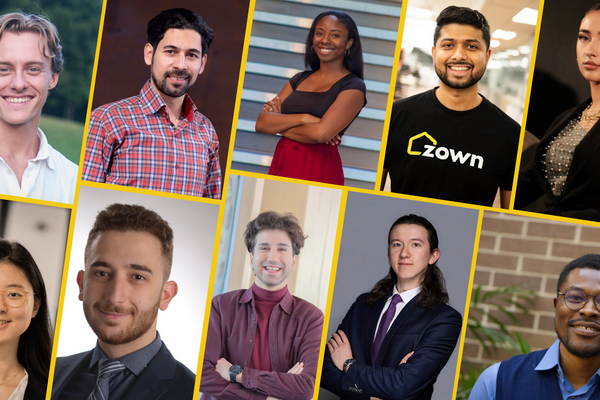
Scope: Zooming in on Success with Focused Lens Technology
Helping people take better photos while reducing the battery use, costs, and processing power of smartphones

Helping people take better photos while reducing the battery use, costs, and processing power of smartphones
By Angela Pause Faculty of EngineeringIn a world where just about everyone has a smartphone it also means that almost everyone has become an amateur photographer. In 2019, more than 657 billion smartphone photographs were taken – and many of them blurry. But help is on the way. A promising new student venture, Scope, is hoping their invention of a new type of optical zoom lens system with electronically tunable optical power will help people take better photos while reducing the battery use, costs, and processing power of smartphones.
The brainchild of five Waterloo Nanotechnology Engineering 4th year students, Scope is now $50,000 richer thanks to winning the Palihapitiya Venture Fund, money that is meant to give the team funding to work exclusively on their product over the next four months while remaining based in Waterloo Region.
This zoom technology comes at a critical time in smartphone manufacturing. As smartphone manufacturers continue to add three to five apertures to their models, it becomes increasingly expensive to manufacture their bulky phones. The Scope system tackles this problem by redesigning the fundamental lenses creating the camera and making them electrically tunable, allowing for a single aperture to do everything that current systems need many apertures to accomplish, but better. The Scope lens can also be used in other optical applications and markets including microscopy, AR/VR headsets, consumer robotics and drones.
“The idea of tunable lenses has been around for years, but it’s only now that the technology has caught up to the concept,” says Holden Beggs, CEO and one of five co-founders. He notes that the problem of zoom for cameras in phones is also fairly new – for the longest time in the 2000s zooming was achieved digitally by blowing up pixels (dual-aperture cameras in phones made their debut in 2014) but Scope’s nanotechnology innovation fundamentally changes how the zoom is achieved. Instead of adding more apertures, Scope improves on the core optical technology behind the camera to make it a far superior system, says Beggs.
The Scope lenses will reduce a smartphone’s size, cost, and power load without compromising other smartphone features, according to Beggs. “With the introduction of machine learning components, our lenses will be able to automatically optimize for wide-angle or telephoto shots without a quality decrease. Our solution paves the way for new tech like AR and 5G, the former through its higher quality camera and improved quality at zoom, and the latter through a massive reduction in processing needs.”
Beyond impressive technology that will allow for lossless optical zoom – almost guaranteeing anyone can incredible photos at any time – the Scope team itself is impressive. Each co-founder was chosen for the skills they bring to the team, says Beggs. In addition to designing optical crystals at Harvard, the skills he learned during his stint as Improv Club president on campus are essential as the front man during pitches and VC meetings. Alisha Bhanji has leveraged her experiences at Apple’s manufacturing design team, robotics engineering at NASA’s Jet Propulsion Lab and co-ops at MIT and Thalmic (now North) to develop keen insights on the optical problem and Scope’s solution. Fernando Peña Cantú has built advanced optical simulations from scratch, while Zhenle Cao’s experience includes semiconductor process engineering at Analog Devices’ Hillview Fab in California, and Ishan Mishra brings both venture capital and optics expertise from positions at Nav Talent and Teledyne DALSA. “We didn’t just partner with our friends to build this – we made sure everyone had a crucial reason to be on the team,” said Beggs. He also is grateful for the advice of professors including the campus Dean of Science Dr. Bob Lemieux, and author of over four hundred optics publications Dr. Vengu Lakshminarayanan, who happily gave their time and expertise to look over Scope’s technology.
While the pandemic has forced the Scope team to temporarily suspend the in-lab manufacturing projects they had lined up, Beggs sees the silver lining of the situation. He says they are using this enforced slow down period to design and simulate new lenses, and expand their market opportunities. “A chance to look deeply at our work and make sure we’re doing it right is something very few startups ever get given,” he says.
“The $50,000 that the Palihapitiya Venture Creation Fund provided has let the team devote ourselves entirely to accelerating Scope’s progress, even during the pandemic,” said Beggs. The Scope team has previously won the 2019 Fall Concept 5k grant, are two-time recipients of the Waterloo Engineer of the Future Fund, winners of the University of Waterloo Problem Pitch 15K 2020, and most recently a $10,000 Norman Esch Entrepreneurship Awards for Capstone Design at Waterloo Engineering.
As multi-pitch winners, Scope is building a solid reputation for zooming in on an innovative solution that has been the focus of mobile phone manufacturers without much success. Scope hopes to change this and plans on filing patents on its complete zooming system later in 2020.

Read more
Here are the people and events behind some of this year’s most compelling Waterloo stories

Read more
For more than four decades, Waterloo professor Larry Smith has helped build the University's reputation for innovation and entrepreneurial excellence

Read more
From transforming solutions for homeownership to advancing health care interventions, Waterloo talent continues to disrupt industries and drive change
Read
Engineering stories
Visit
Waterloo Engineering home
Contact
Waterloo Engineering
The University of Waterloo acknowledges that much of our work takes place on the traditional territory of the Neutral, Anishinaabeg, and Haudenosaunee peoples. Our main campus is situated on the Haldimand Tract, the land granted to the Six Nations that includes six miles on each side of the Grand River. Our active work toward reconciliation takes place across our campuses through research, learning, teaching, and community building, and is co-ordinated within the Office of Indigenous Relations.